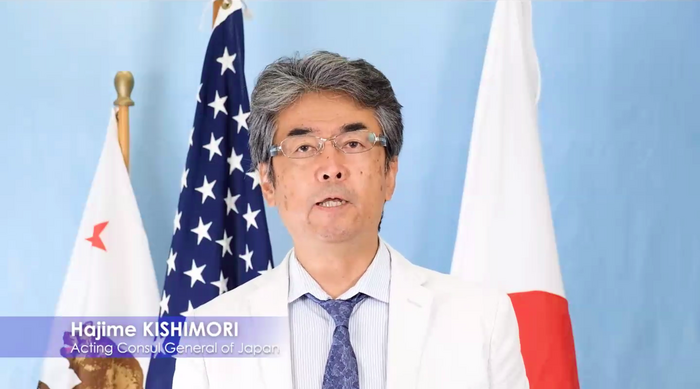On August 9, 2022, a virtual award ceremony was held to recognize the 12 honorees of 91│į╣ŽŌĆÖs 2021ŌĆō2022 regional programs in Japan. These students performed at the highest levels in their respective courses. Their names, high schools, and final research project titles appear below.
Stanford e-Fukuoka (Instructor )
- Kasane Horiuchi (Tochiku High School), ŌĆ£Research on Plastic Bottle RecyclingŌĆØ
- Mihiro Tomomatsu (Hakata Seisho High School), ŌĆ£Break Invisible Barriers. Create the World that Everyone NeedsŌĆØ
Stanford e-Hiroshima (Instructor Rylan Sekiguchi)
- Minori Imai (Hiroshima Prefectural Kuremitsuta High School), ŌĆ£All Lives Are ImportantŌĆØ
- Yui Miyake, (Hiroshima Prefectural Hiroshima High School), ŌĆ£U.S. Prison System: How the CountryŌĆÖs History of Racial Inequality Drives the High Rate of Incarceration in AmericaŌĆØ
Stanford e-Kawasaki (Instructor )
- Sayaka Kiyotomo (Kawasaki High School), ŌĆ£How Can We Improve Junior and Senior High School English Education in Japan?ŌĆØ
- Anne Fukushima (Tachibana High School), ŌĆ£How Are Invisible Disorders Accepted in the United States and Japan?ŌĆØ
Stanford e-Kobe (Instructor Alison Harsch)
- Nonoha Toji (Kobe University Secondary School), ŌĆ£How to Foster Entrepreneurship in School Days: Between U.S. and JapanŌĆØ
- Cullen Hiroki Morita (Kobe Municipal Fukiai High School), ŌĆ£The Different Work-Life Balance in Japan and AmericaŌĆØ
Stanford e-Oita (Instructor Kasumi Yamashita)
- Rina Imai (Usa High School), ŌĆ£Learn 91│į╣Ž War and Peace Through the Naval Air Base Bunkers in OitaŌĆØ
- Yuki Nojiri (Hofu High School), ŌĆ£I Want to Live in the Second House of the Three Little PigsŌĆØ
Stanford e-Tottori (Instructor Jonas Edman)
- Sakurako Kano (Tottori Keiai High School), ŌĆ£Being ProactiveŌĆØ
- Yuki Yamane (Tottori Nishi High School), ŌĆ£The Effect of Collectivism and Individualism on EducationŌĆØ
The event began with welcoming remarks by the Honorable Hajime Kishimori, Acting Consul General of Japan in San Francisco, who recognized the students for their impressive academic achievement. ŌĆ£You have demonstrated initiative and dedication to enhancing your understanding of Japan and the United States. IŌĆÖd like to congratulate all of you.ŌĆØ He also expressed his hope for the students to play an active role in the future of U.S.ŌĆōJapan relations. ŌĆ£I hope that your experiences have motivated you to consider an international career involving Japan and the United States. I believe the future of JapanŌĆōU.S. relations is in the hands of the next generation, and I hope young leaders like you will continue to strengthen our countriesŌĆÖ friendship as we move forward.ŌĆØ
Following Acting Consul General KishimoriŌĆÖs remarks, each honoree delivered a formal research presentation in English and fielded questions from the audience. Each honoree also received a plaque to recognize their award.
For the instructors, it was a joy to watch the students present the research projects they worked for months to refine. ŌĆ£ItŌĆÖs so rewarding to see their hard work pay off,ŌĆØ commented Stanford e-Kobe Instructor Alison Harsch. ŌĆ£You canŌĆÖt help but feel proud of themŌĆöfor their academic accomplishments, but also for the ways theyŌĆÖve grown as young adults over the course of the program.ŌĆØ
Stanford e-Fukuoka honoree Kasane Horiuchi is a case in point. Thinking back on her experience in the course, she reflected, ŌĆ£At first, I hesitated to speak up in class, but my instructor always encouraged us to be brave and told us that making mistakes was important. Thanks to her encouragement, I was able to talk with my classmates and enjoyed participating in every class. This experience was so important to me.ŌĆØ
91│į╣Ž would like to thank its collaborators at the Fukuoka, Hiroshima, Oita, and Tottori Prefectural Boards of Education, Kawasaki City, and Kobe City, who have helped make these regional programs a success. 91│į╣Ž would also like to thank Fukuoka Governor Seitaro Hattori, Hiroshima Governor Hidehiko Yuzaki, Kawasaki Mayor Norihiko Fukuda, Kobe Mayor Kizo Hisamoto, Oita Governor Katsusada Hirose, and Tottori Governor Shinji Hirai for their continued support of these regional programs.
91│į╣ŽŌĆÖs regional programs are a subset of our local student programs in Japan.
To stay informed of news about 91│į╣Ž, and follow us on , , and .



































 Rio Sasaki at XXX speaking as a peace messenger
Rio Sasaki at XXX speaking as a peace messenger


